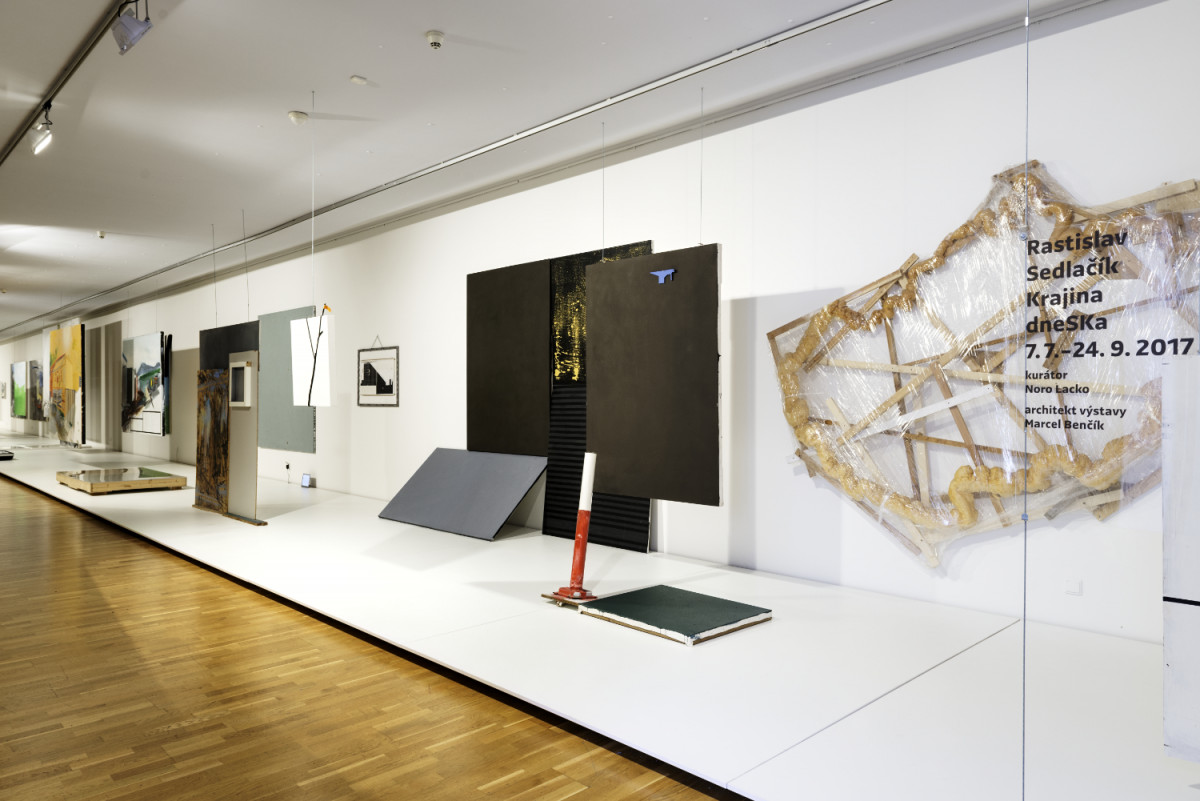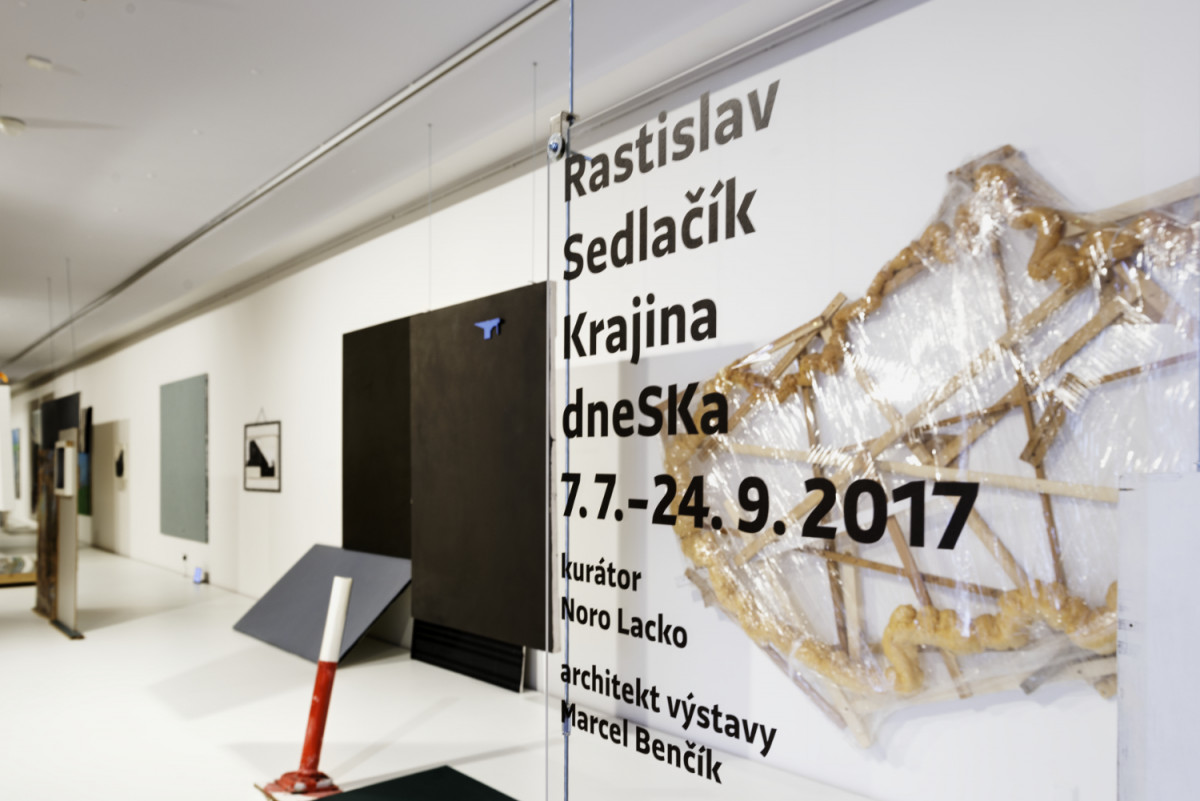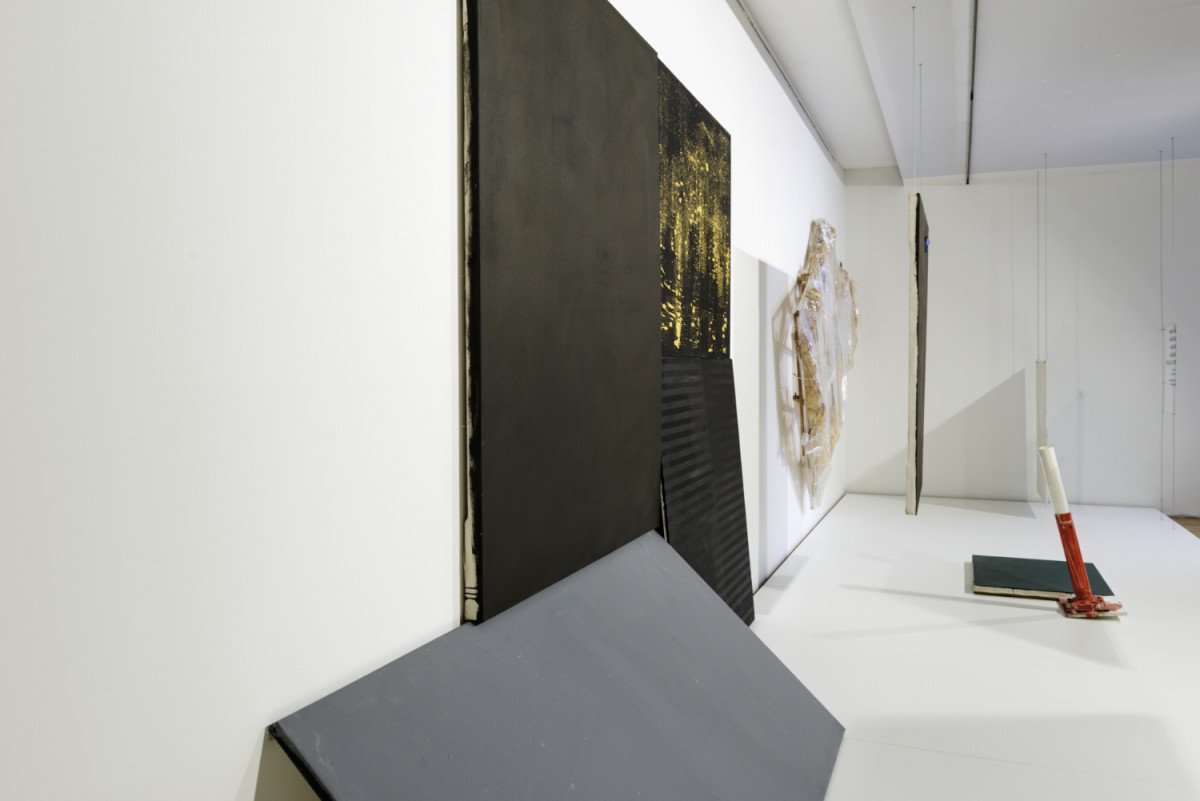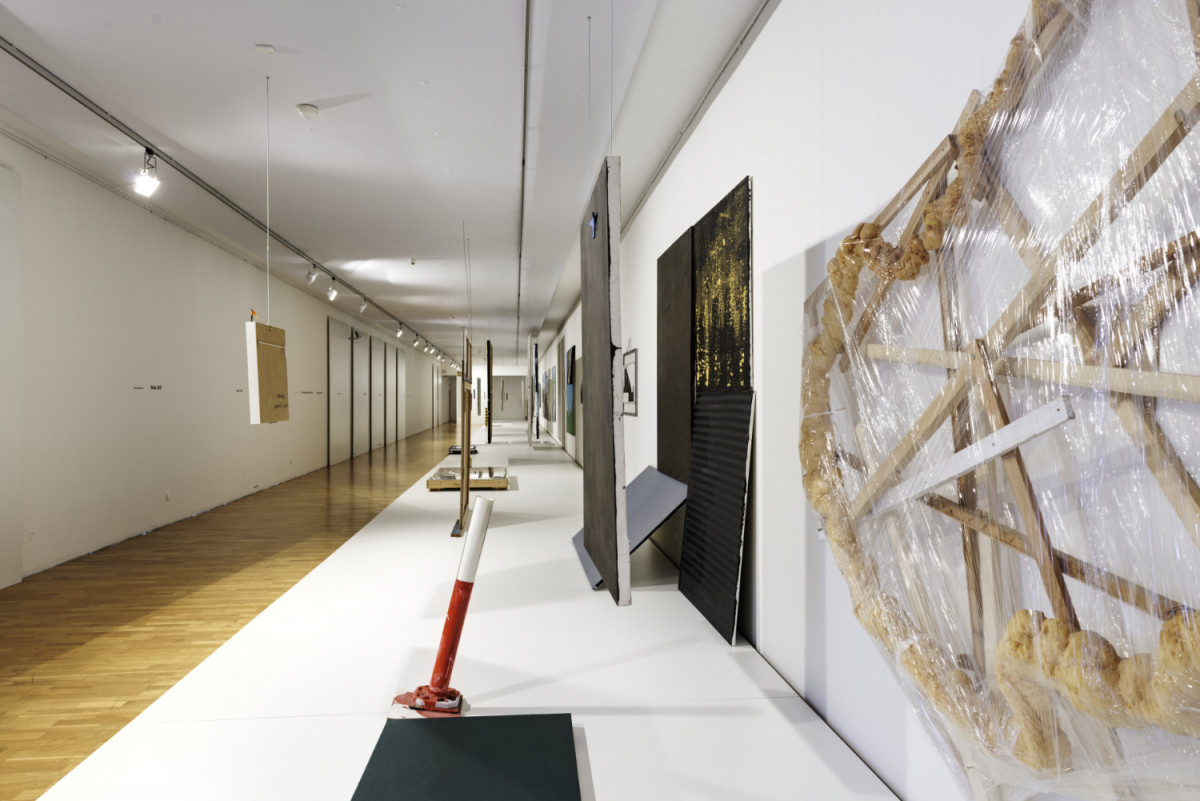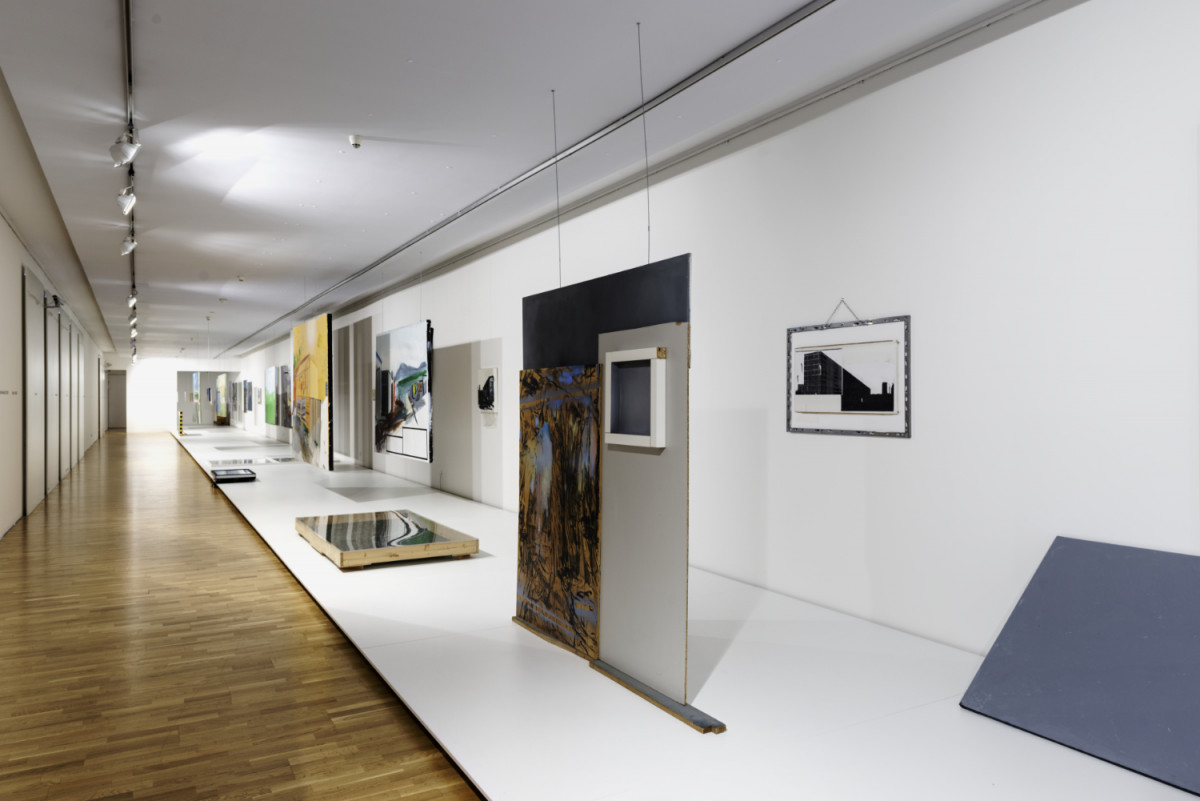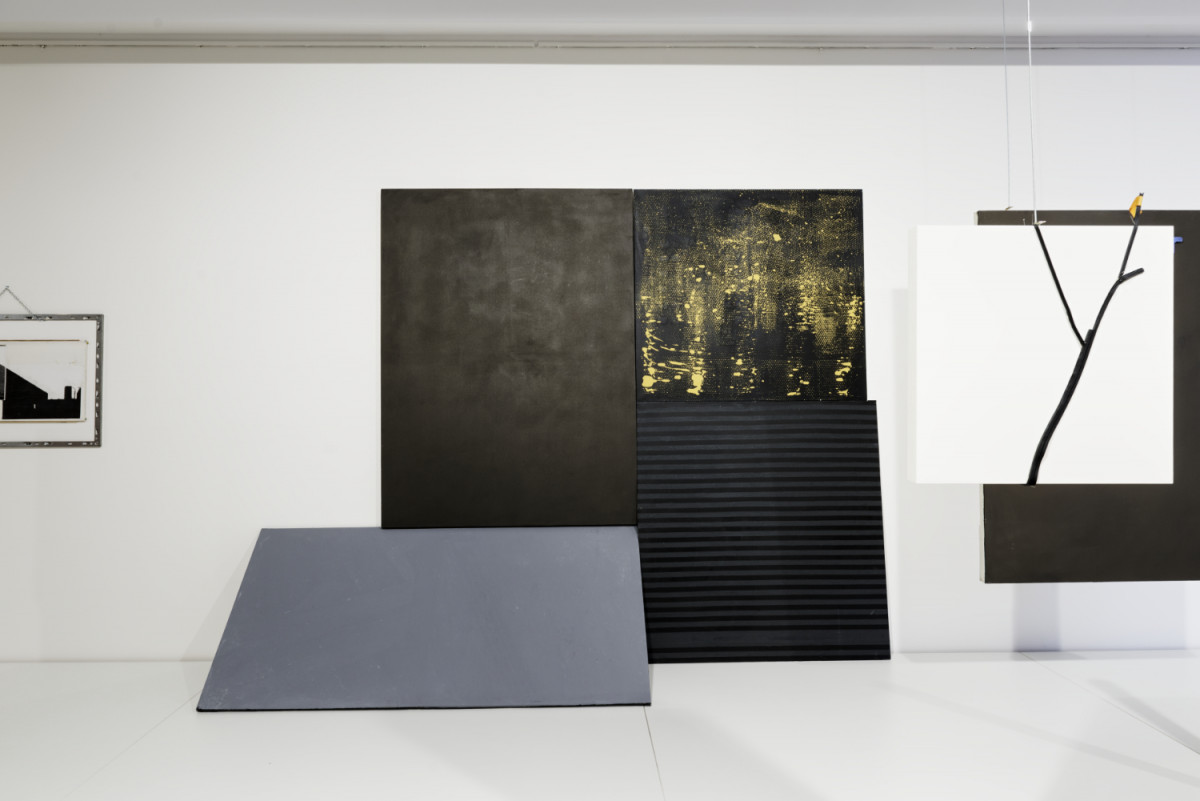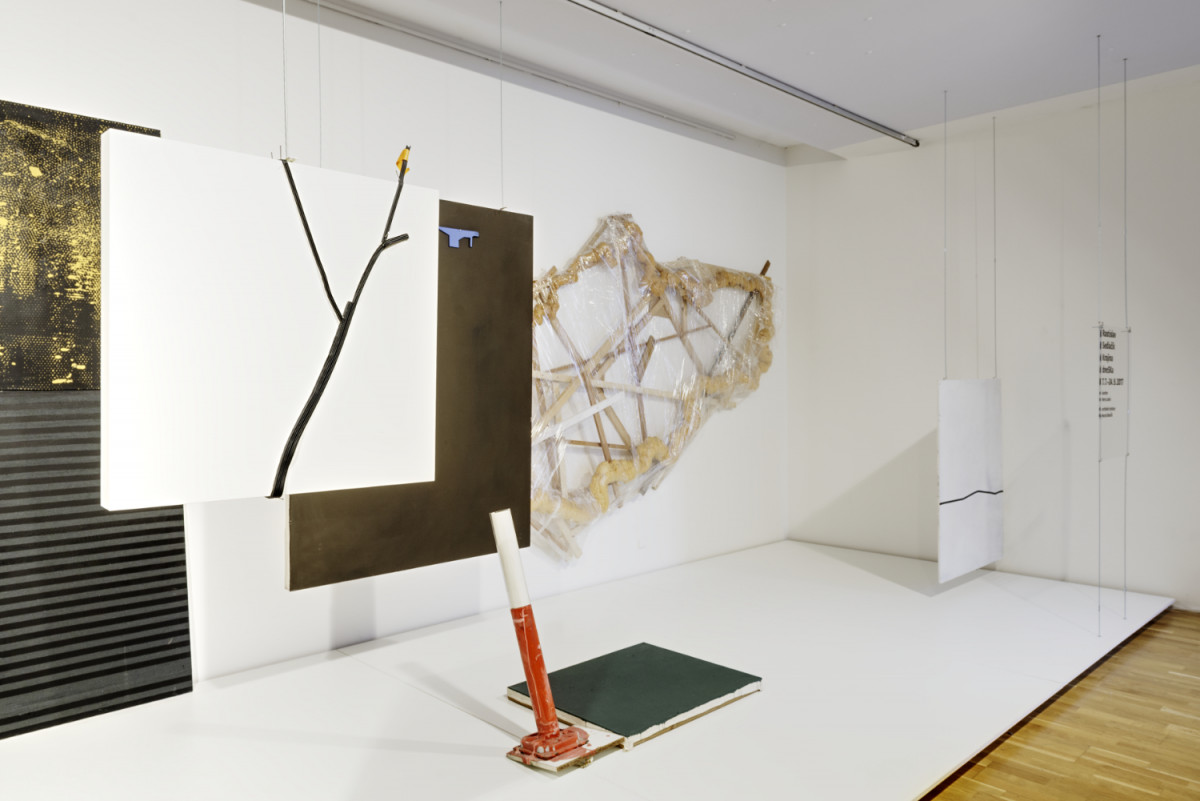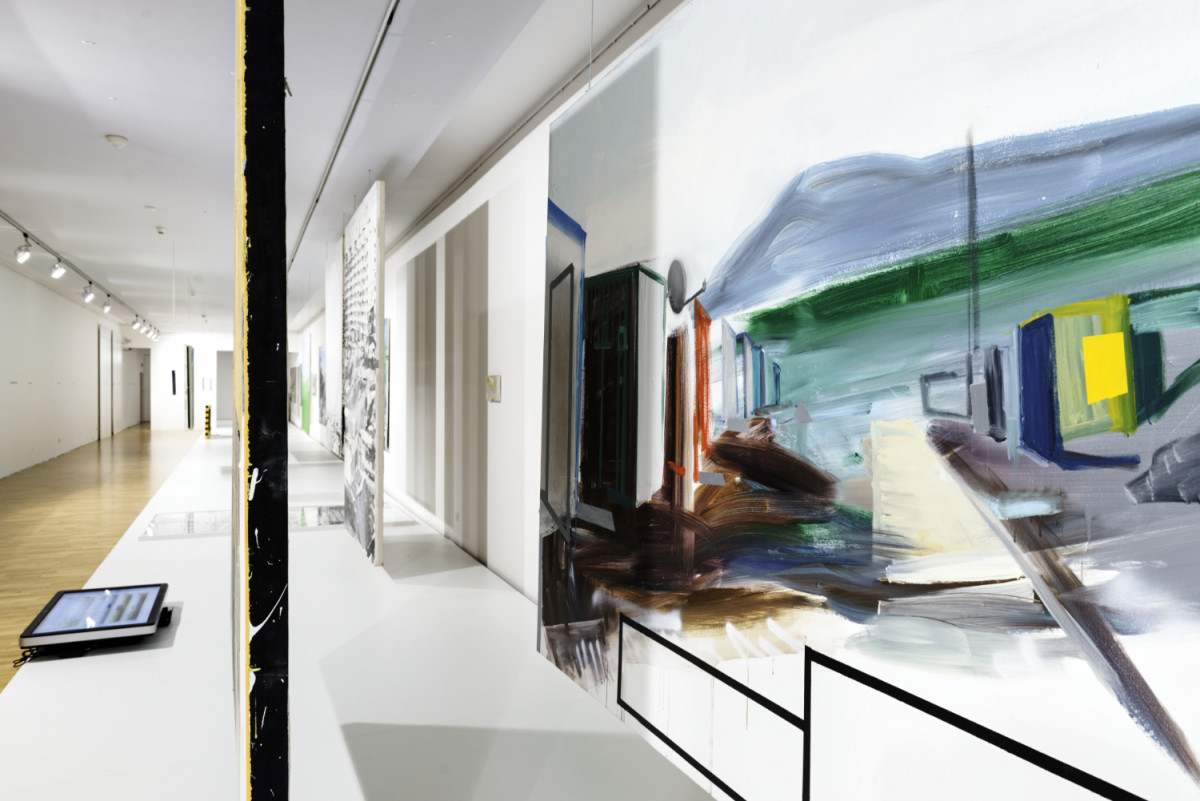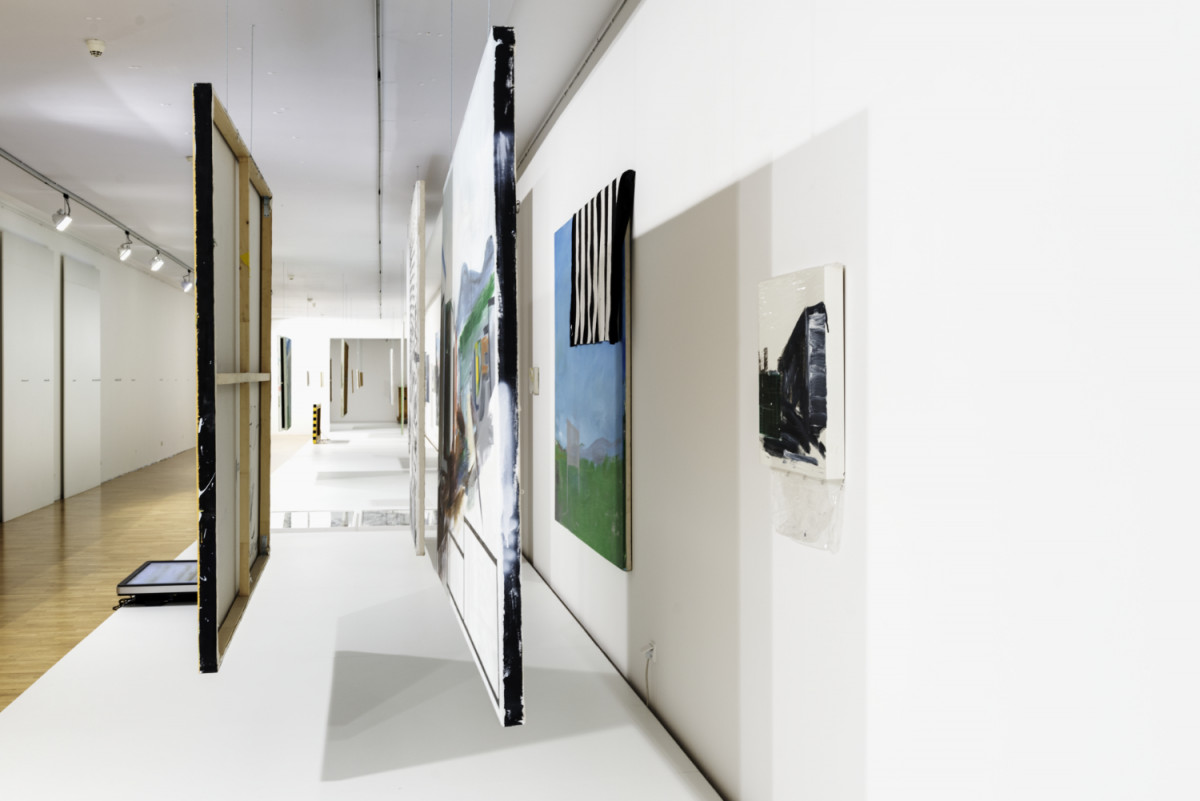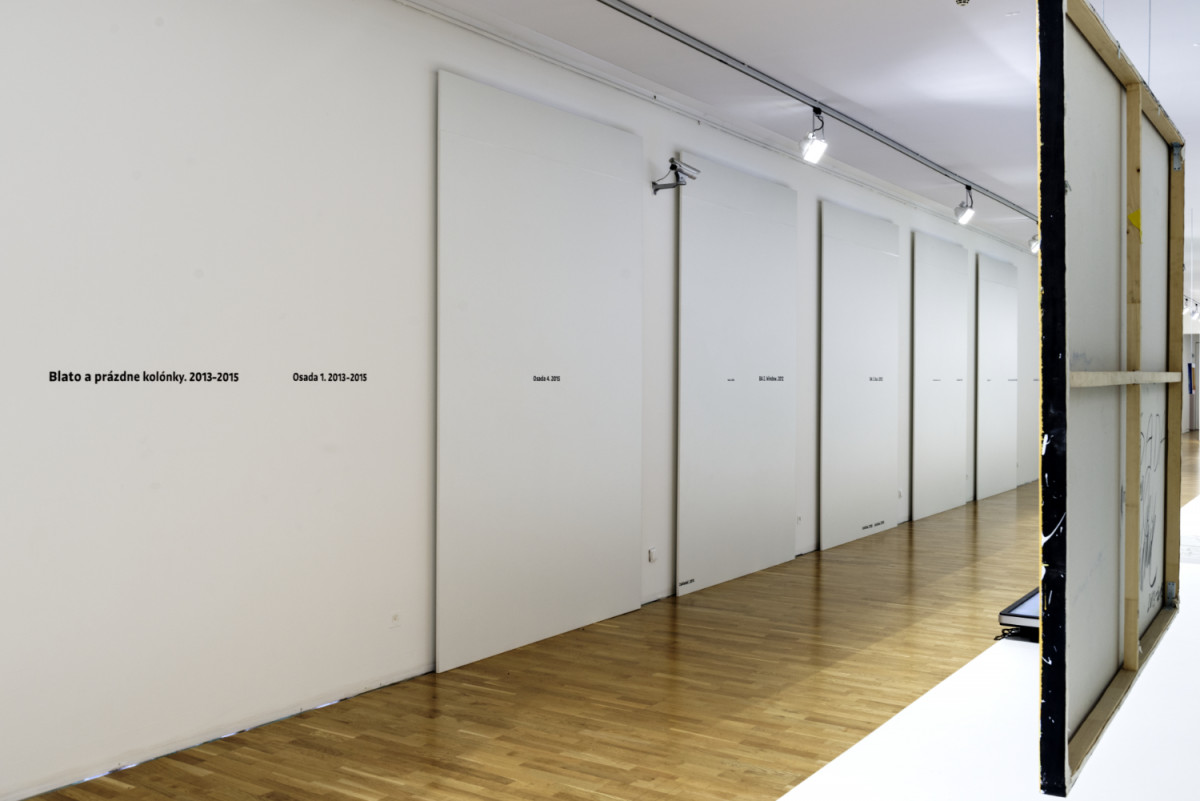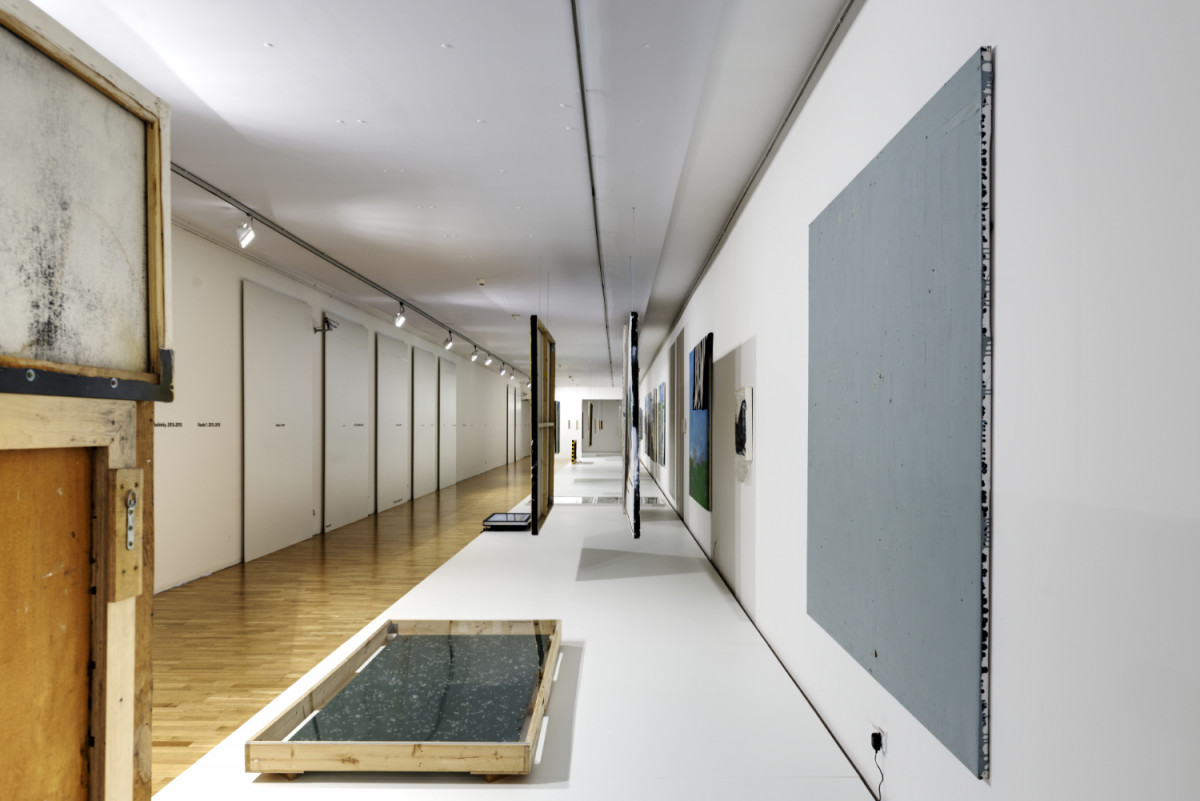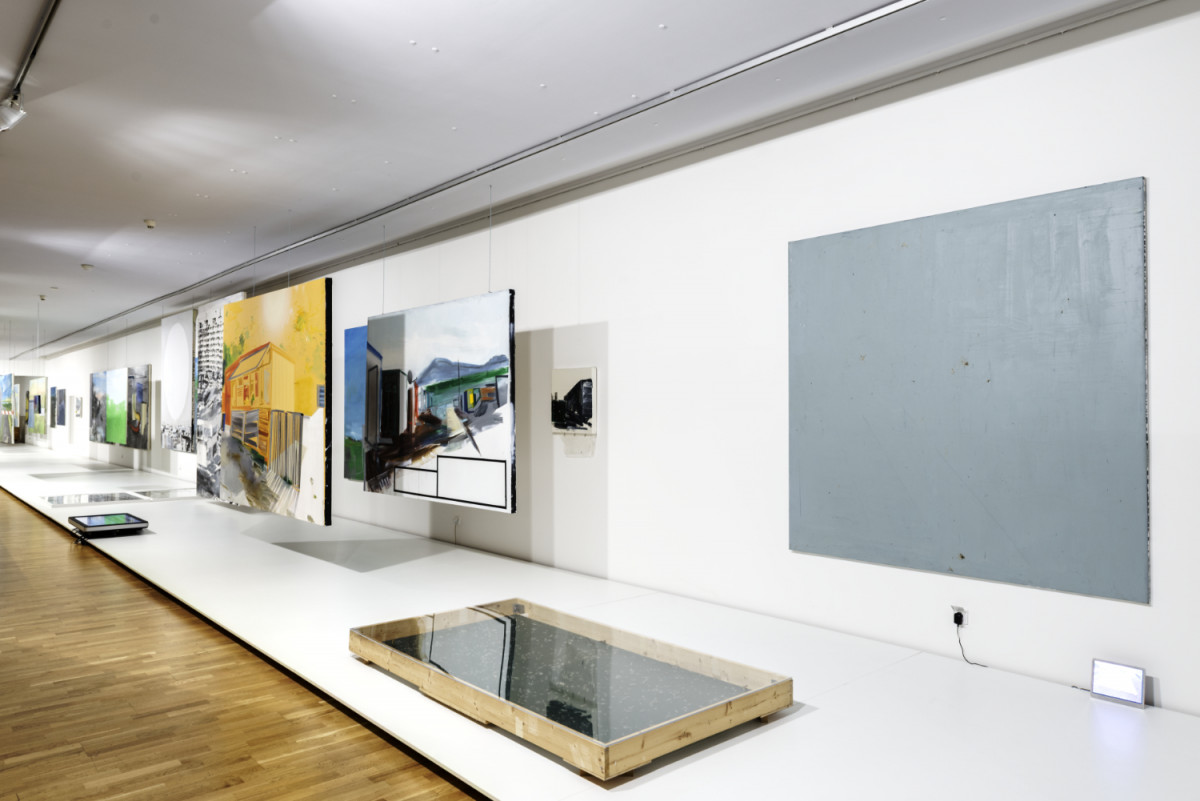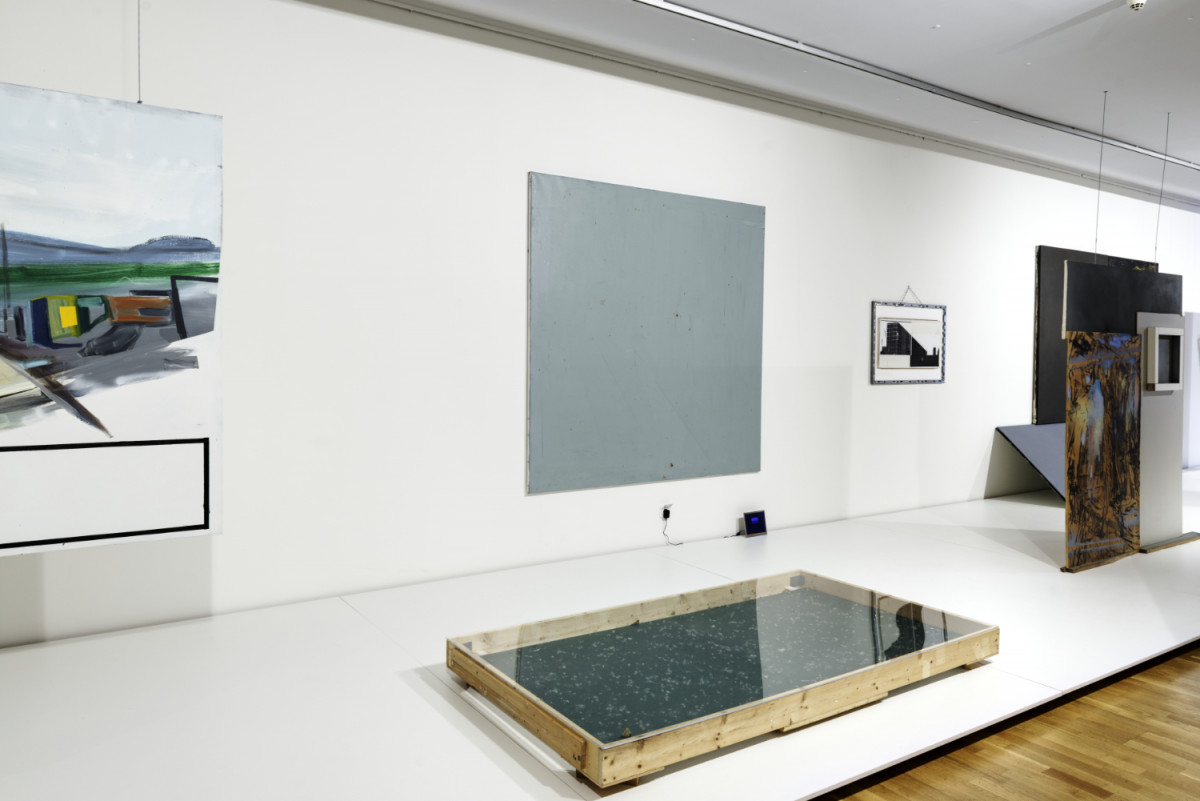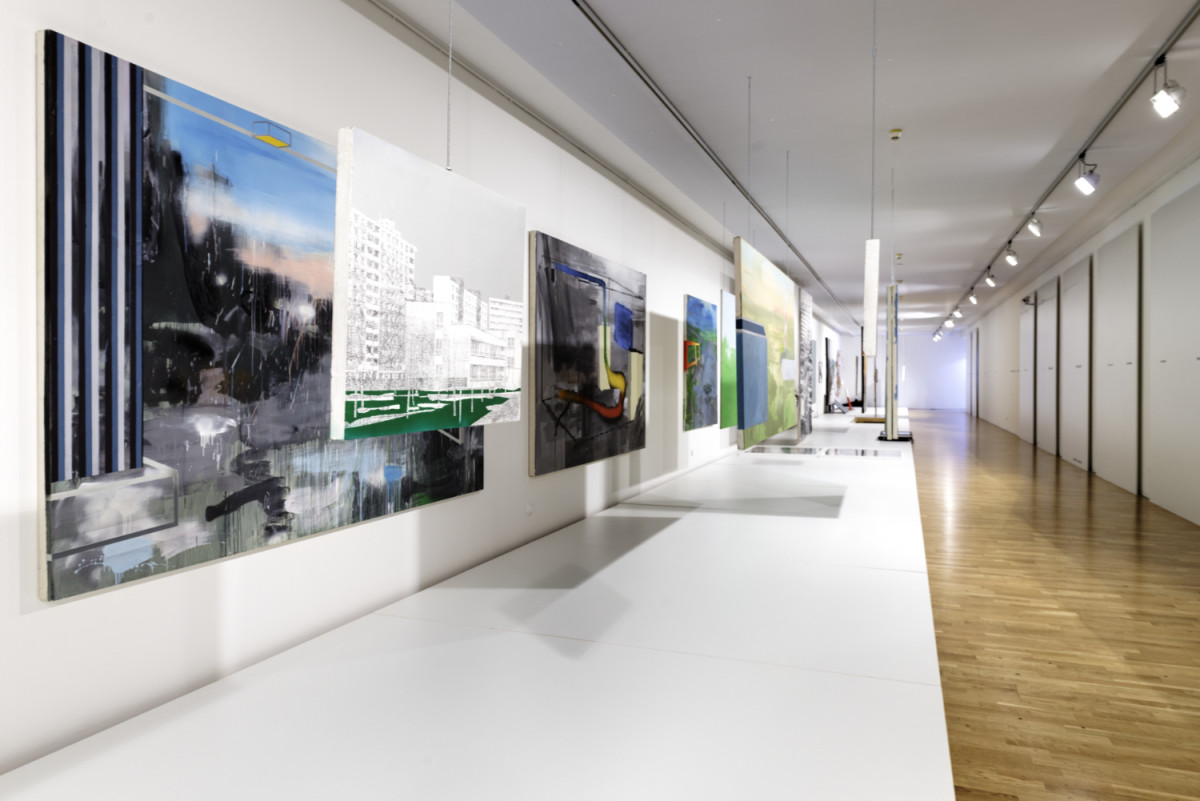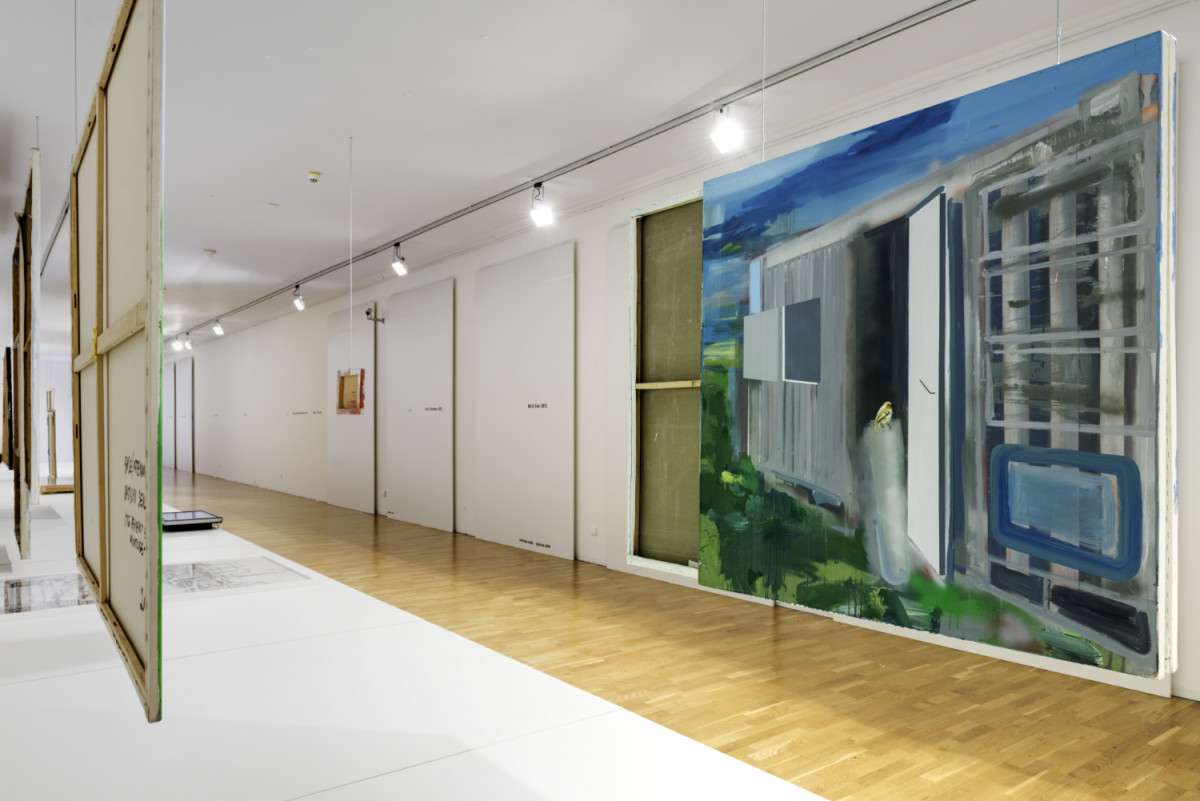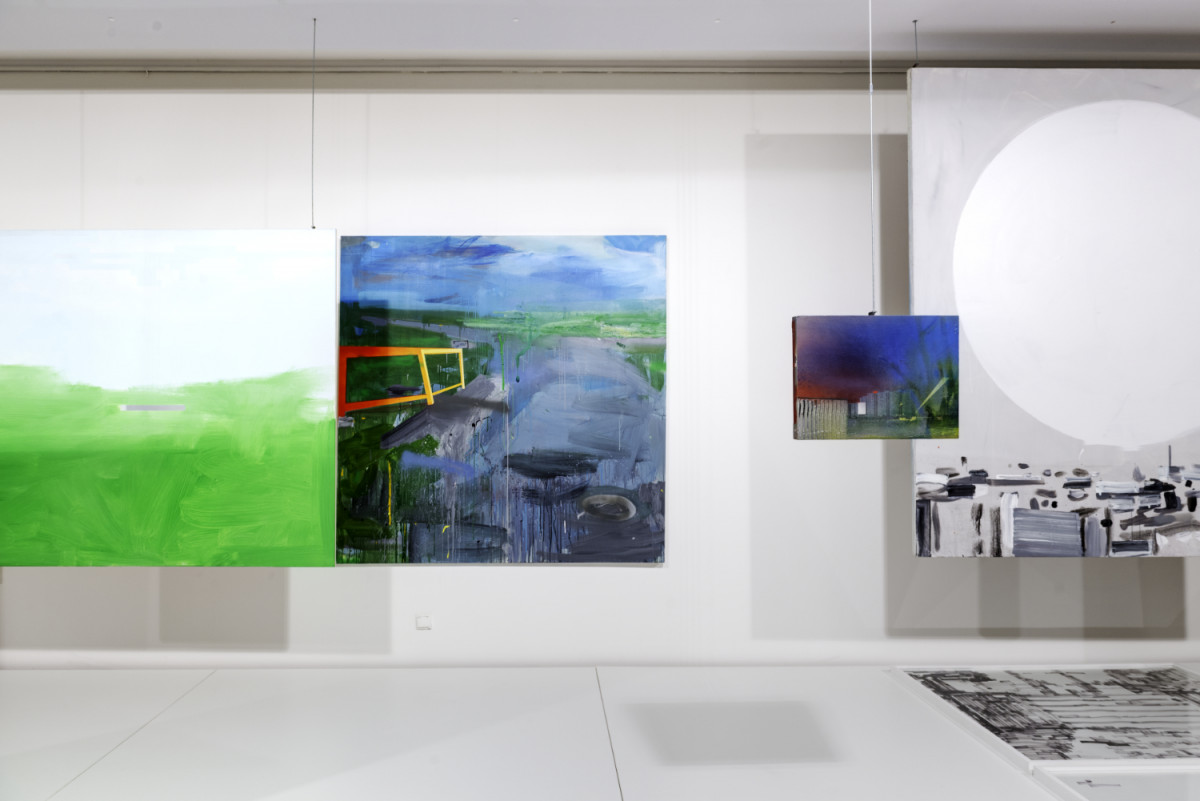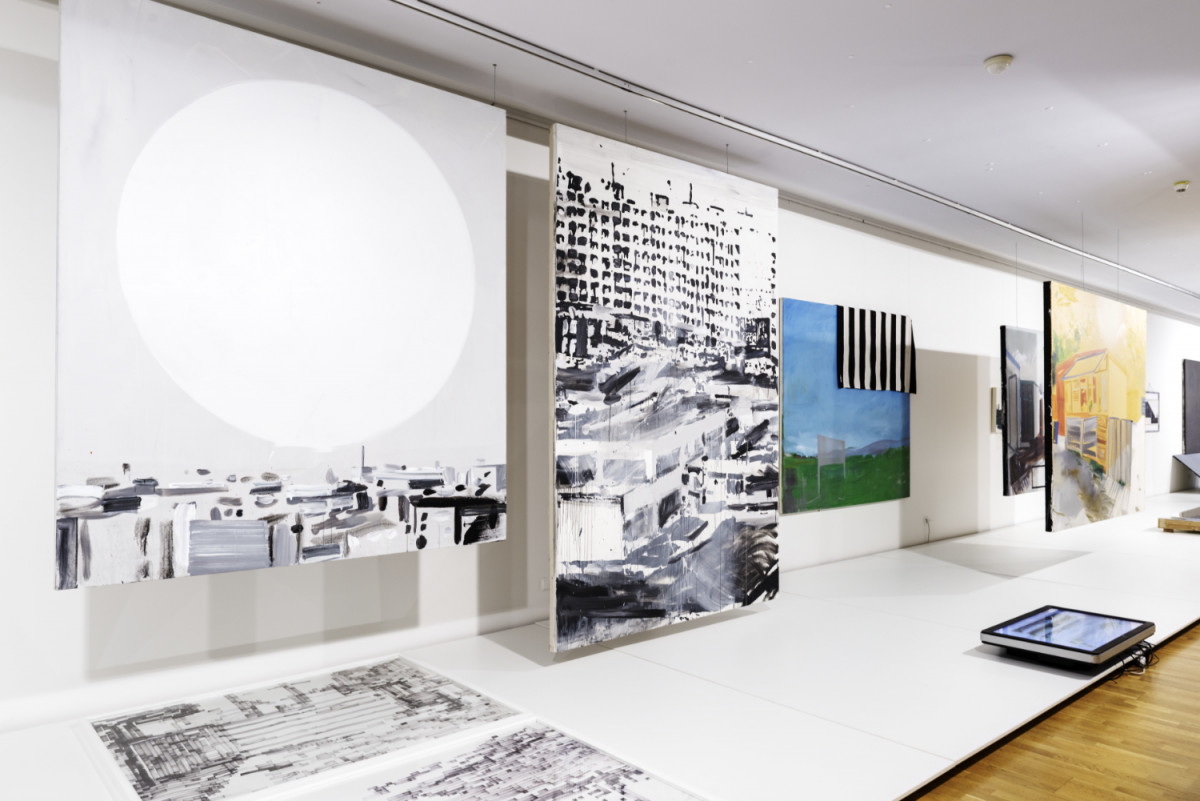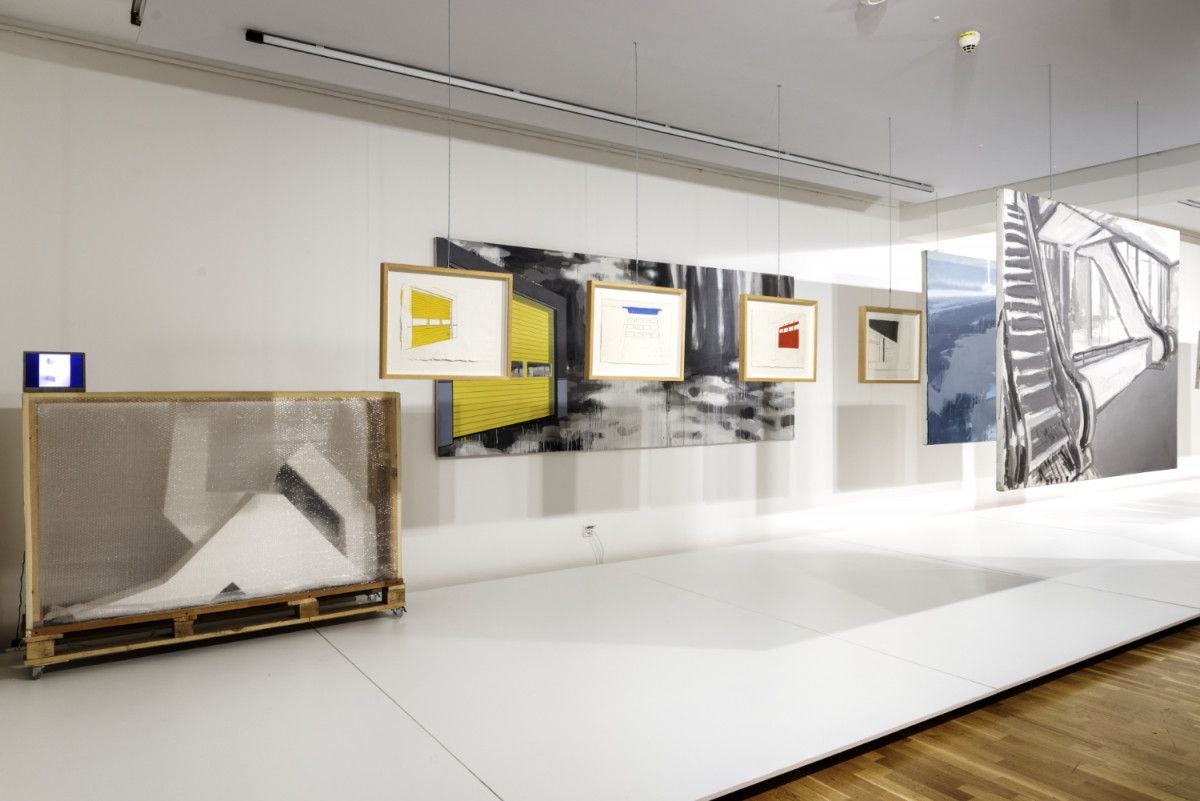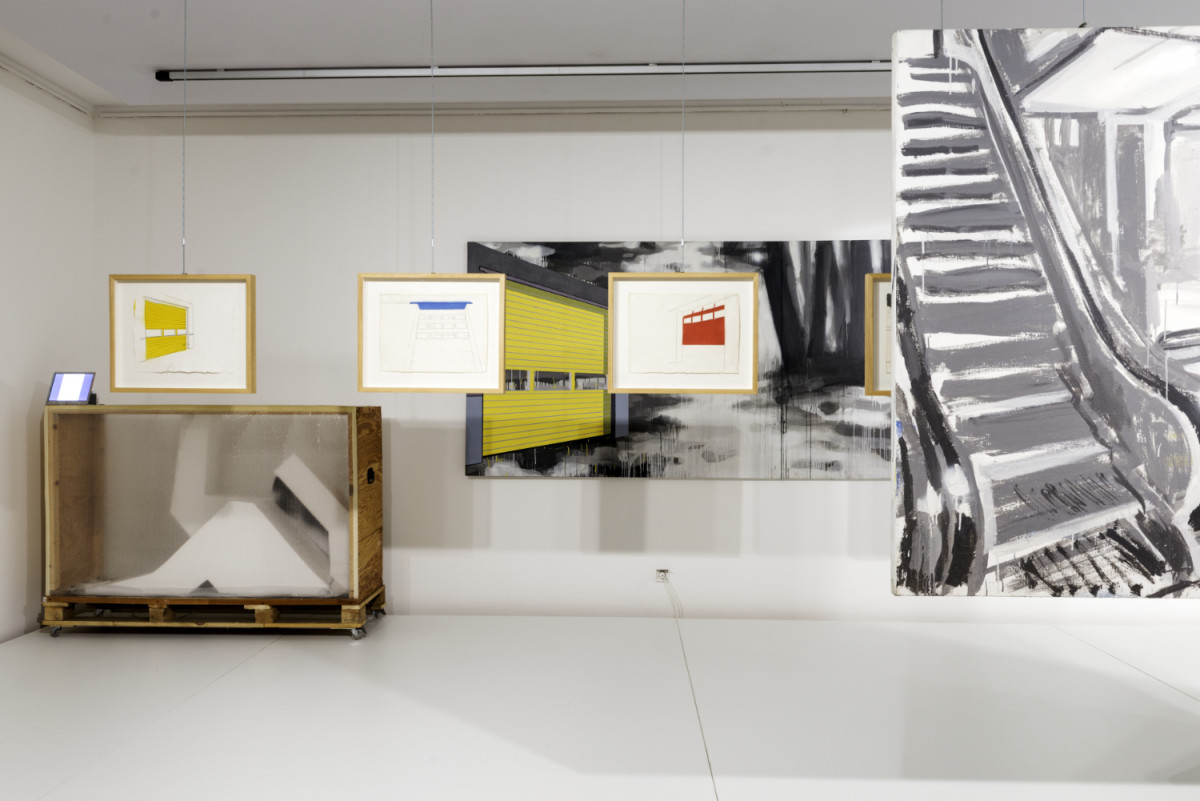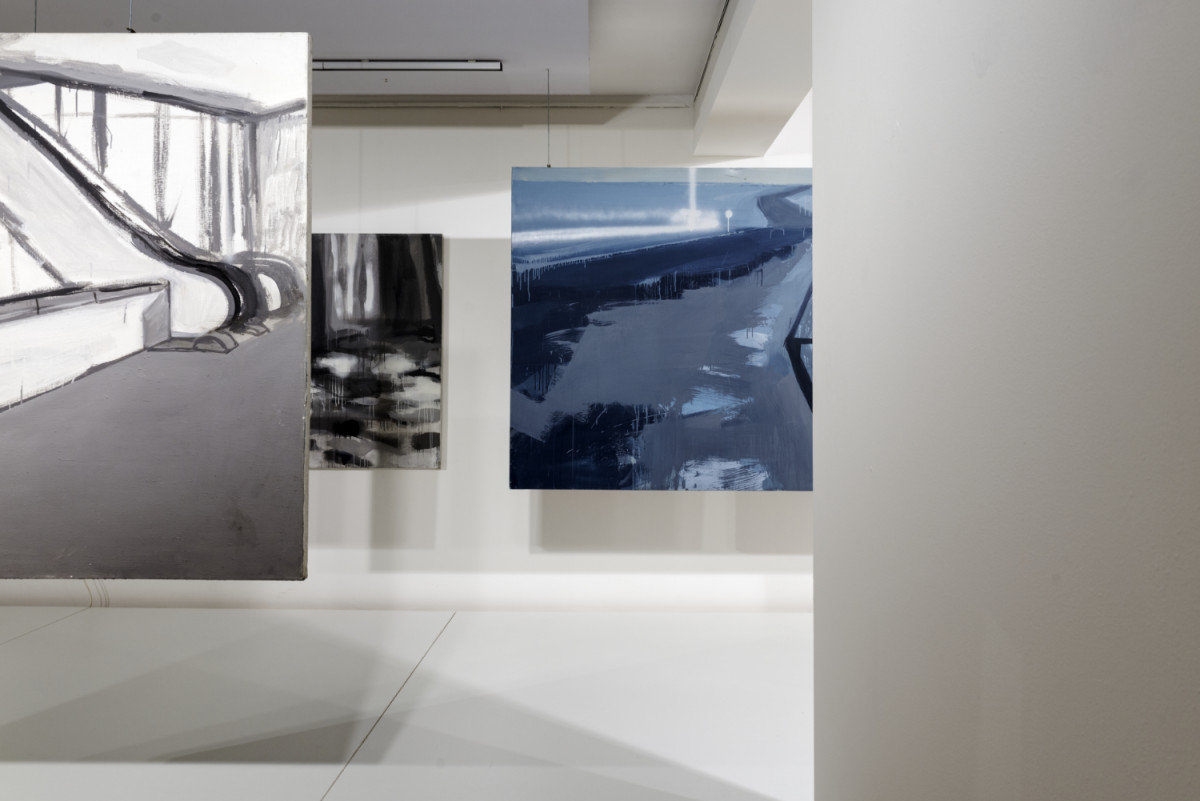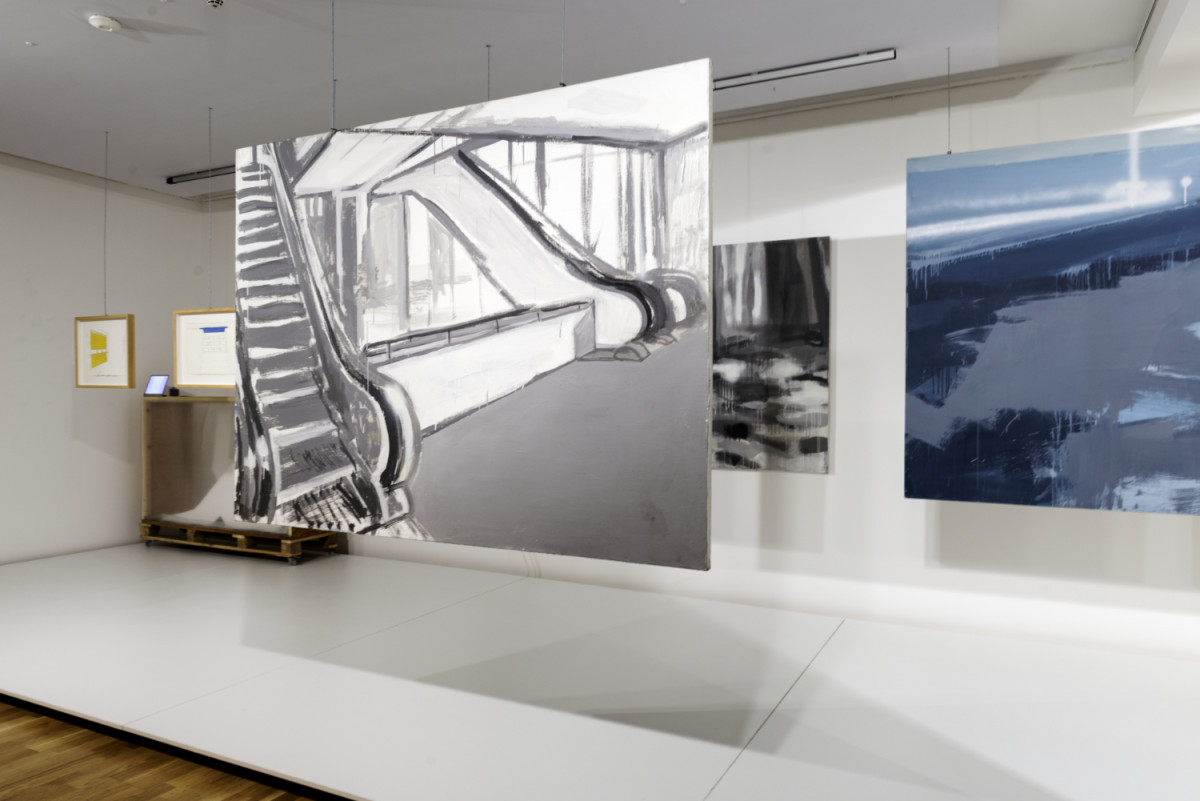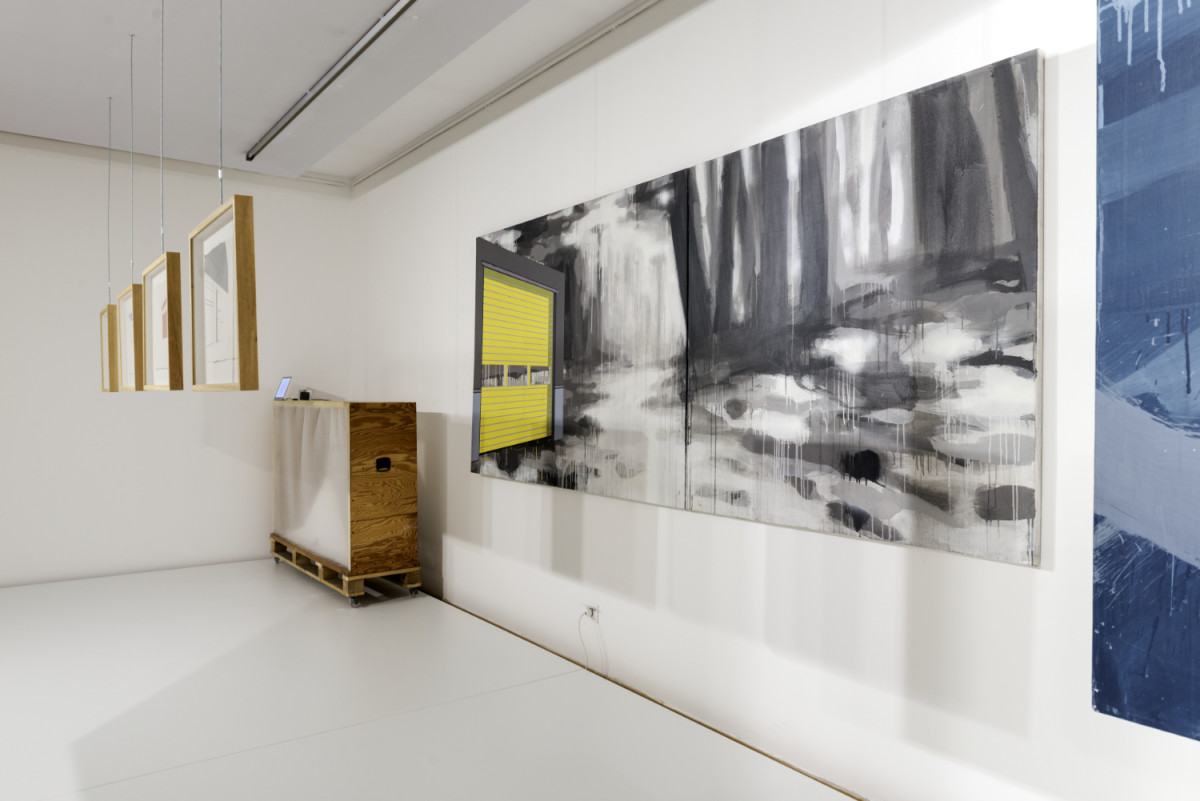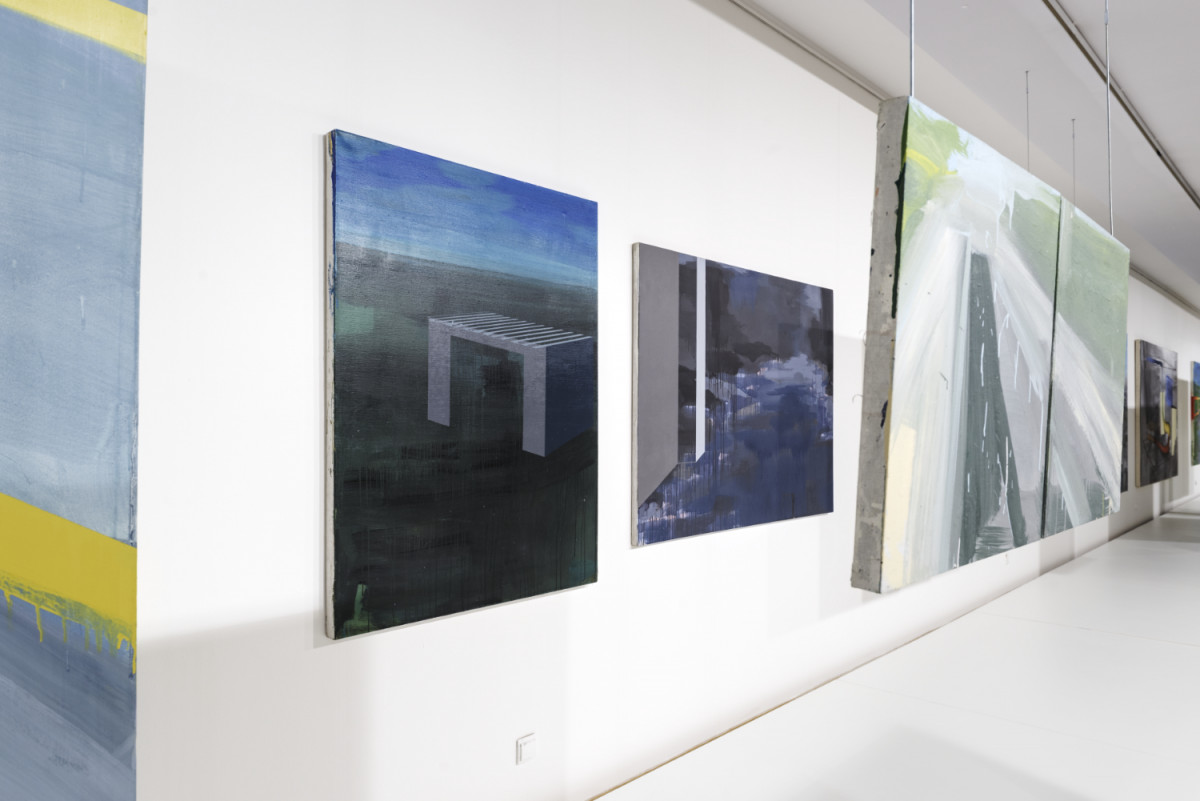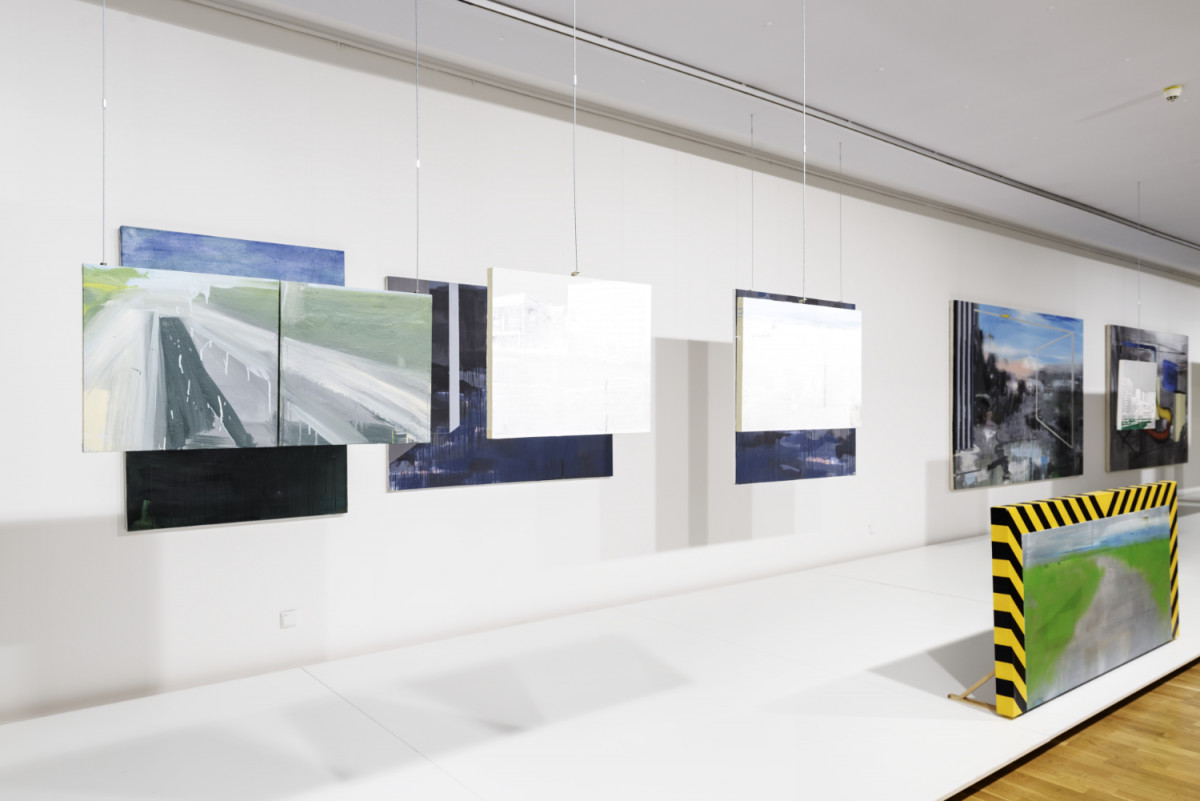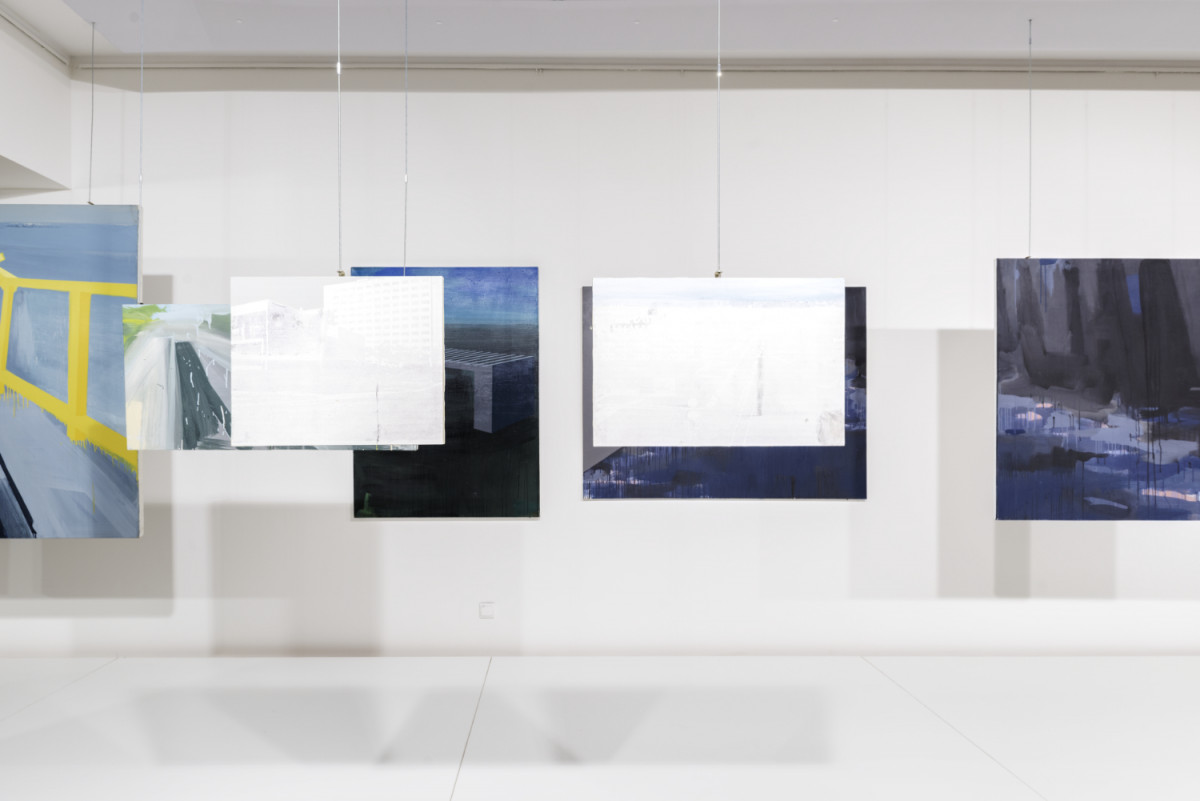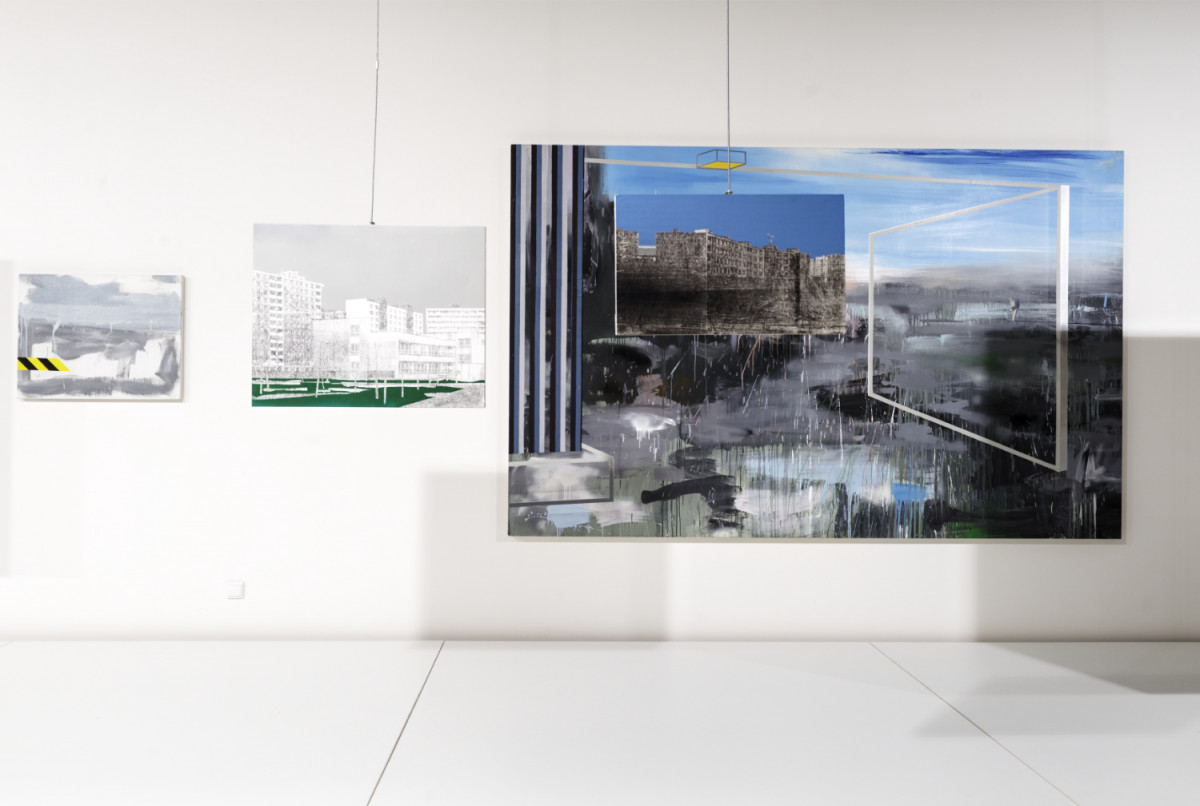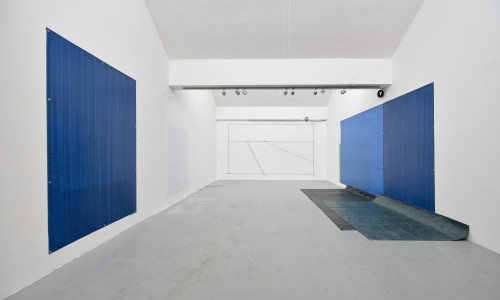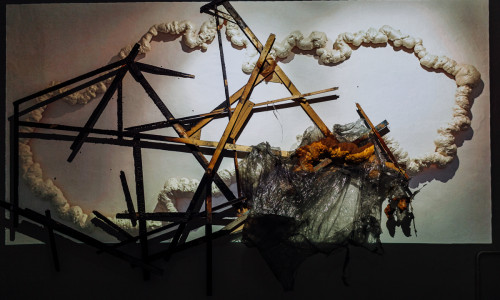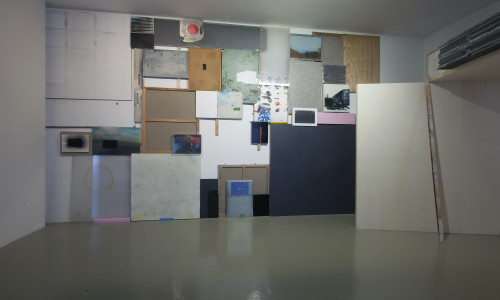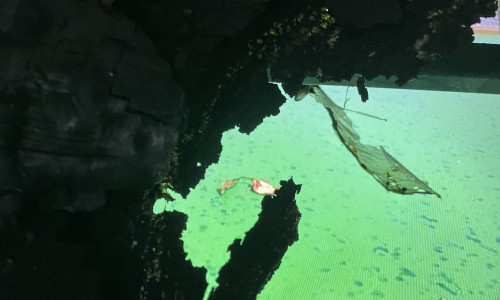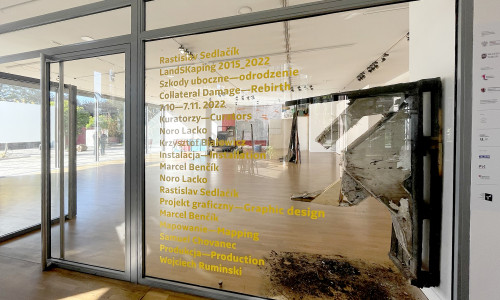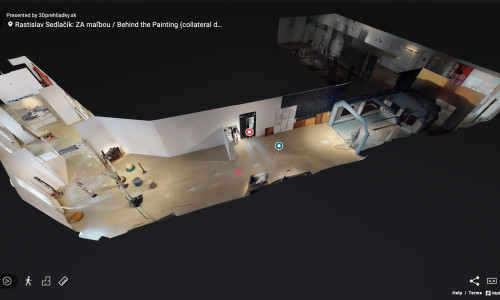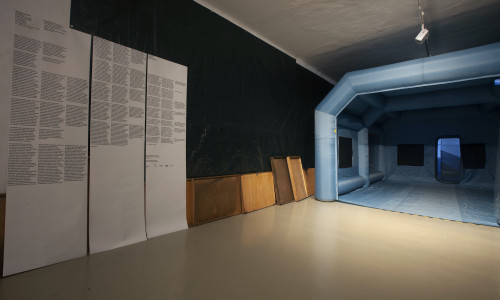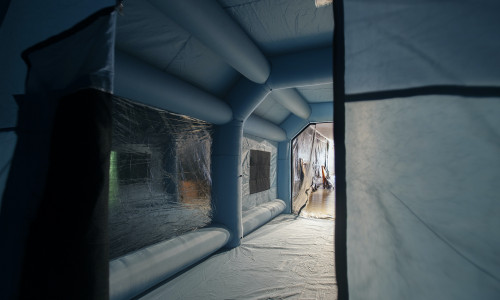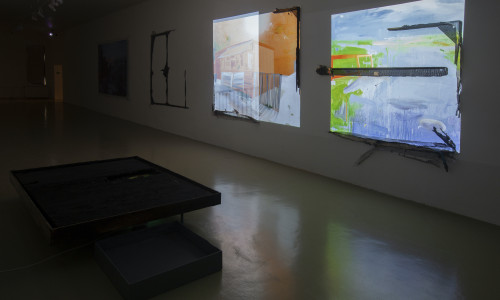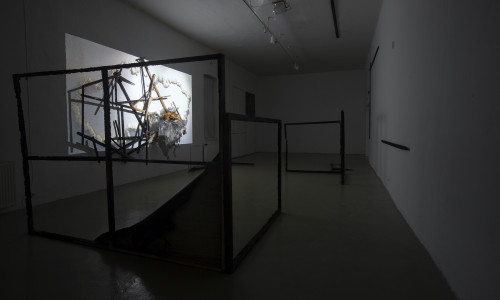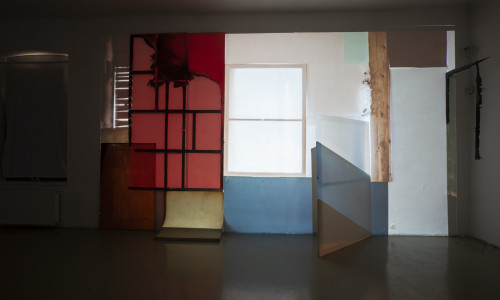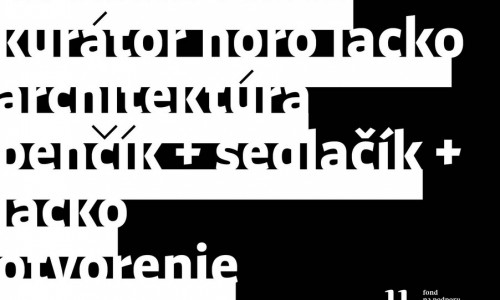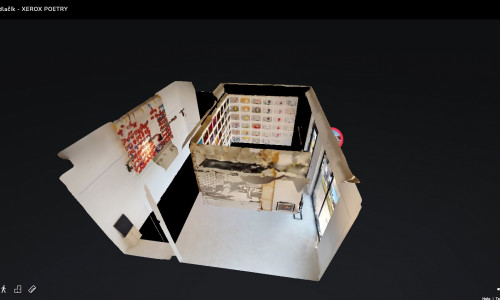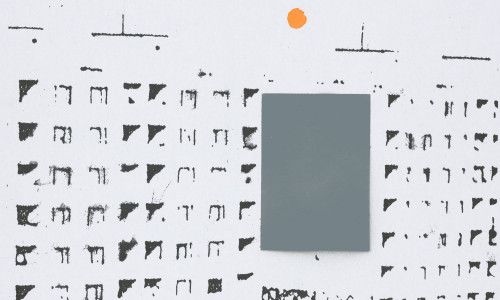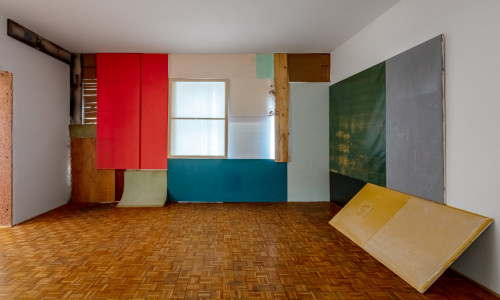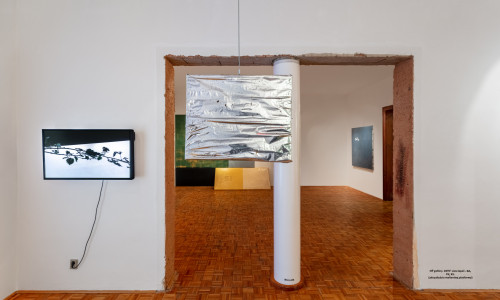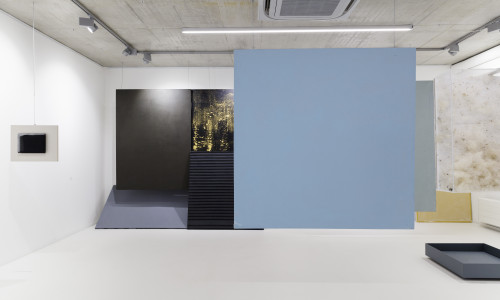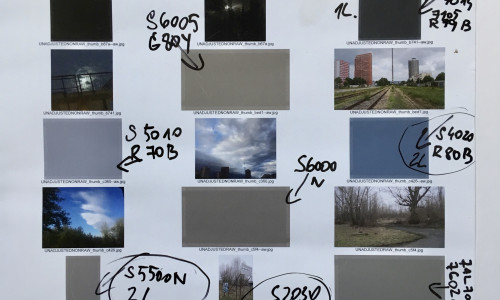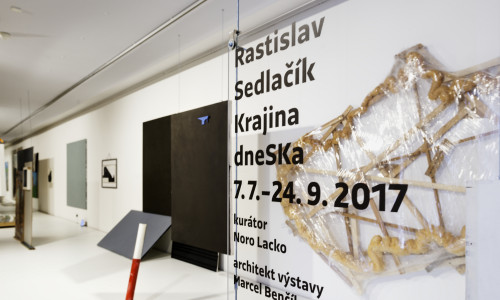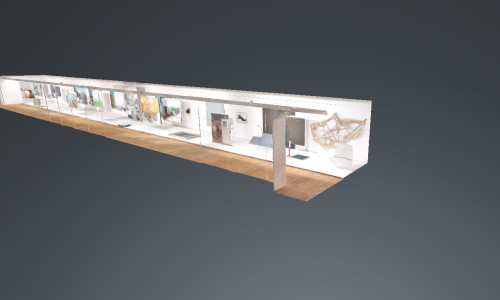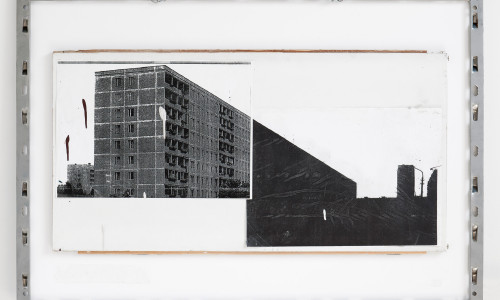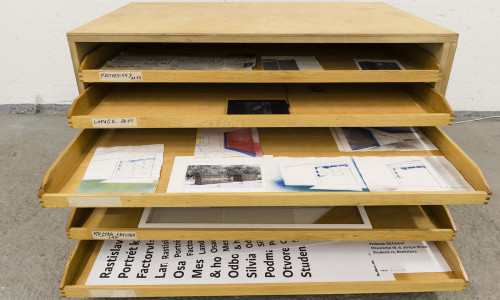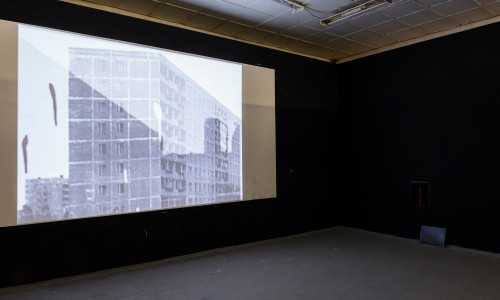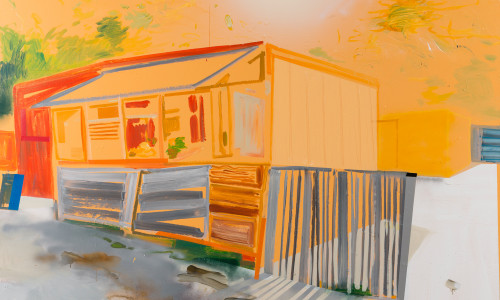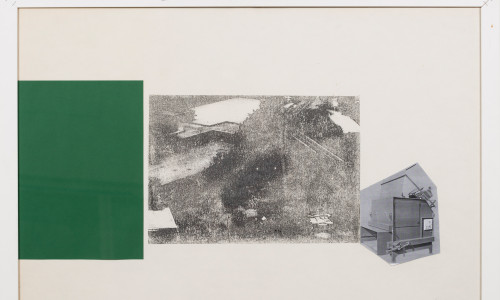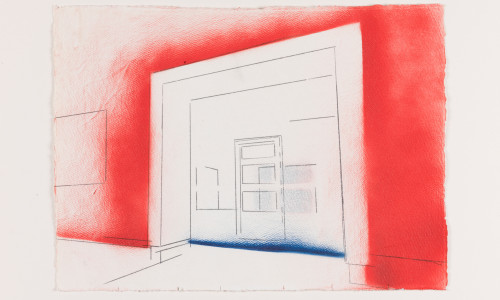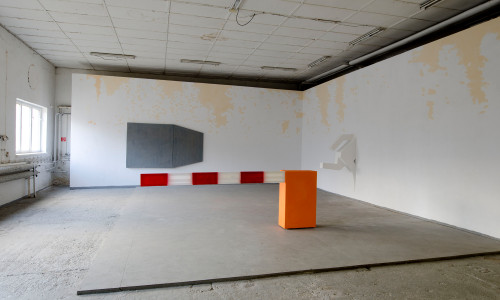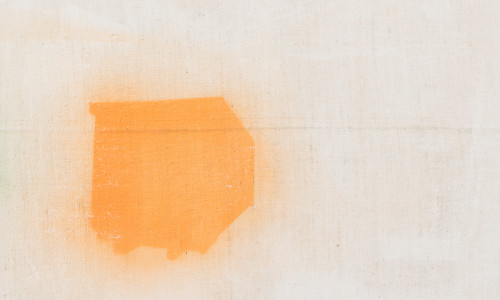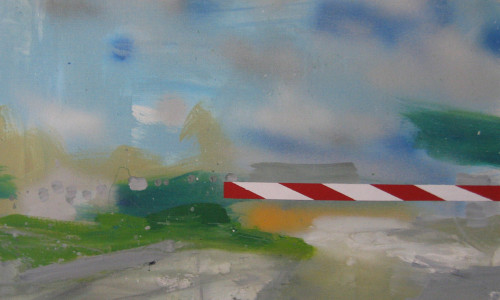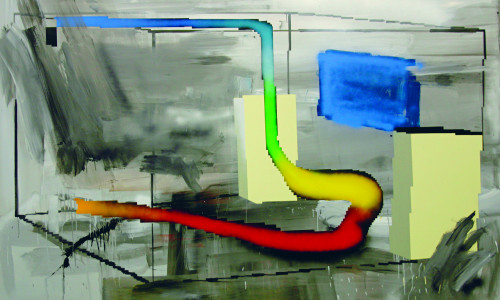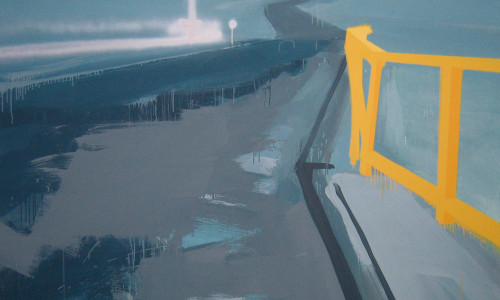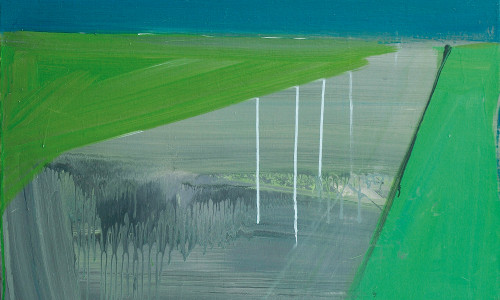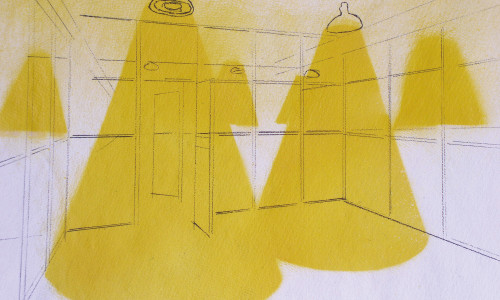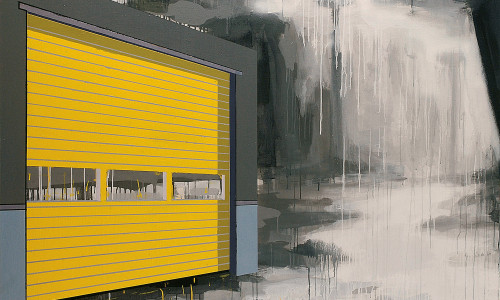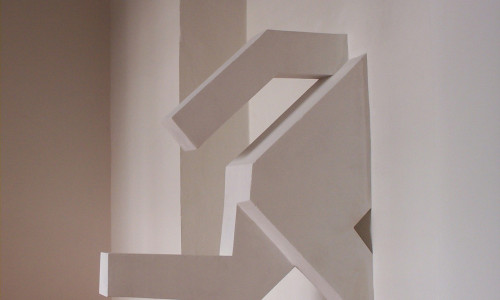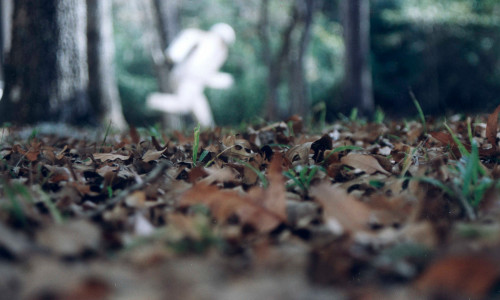Krajina dneSKa/ LandSKape Today
Rastislav Sedlacik
Východoslovenská galéria, Košice
foto Martin Deko
2017
Rastislav Sedlačík: Krajina dneSKa/ LandSKape Today
Východoslovenská galéria, Košice
Kurátor projektu: Noro Lacko
Trvanie výstavy: 6. 7 2017- september 2017
Architektúra výstavy: Marcel Benčík, Rastislav Sedlačík
Grafický dizajn & vizuál výstavy: Marcel Benčík
The presented exhibition LandSKape Today is the third, not exactly common, collaboration between the artist Rastislav Sedlačík and the graphic designer and architect of the exhibition Marcel Benčík. The first tentative meeting was their mutual cooperation at the exhibition Portrait of the LandSKape, which they managed to prepare during the odd meantime of re-opening and re-closing of the hangar complex on Bratislava's Zlaté piesky, currently named PRFR / Zlaté triesky BA. Here Sedlačík and his work were completely in their element. Where else, but in such sporadically and spontaneously rehabilitated and equally naturally dilapidated, former industrial complex, where - not in a seasonal rhythm but before almost every exhibition - it is necessary to tear up wild plants and clean up the spontaneously emerging and self-organizing post-industrial installations and post-products, could Sedlačík's works of art feel at home. The charm of such an environment, for those who like this type of adventure, lies in the exploration of a new wilderness, abundant in the gaps of urban development, where the coexistence of two orders - civilization and nature - spontaneously and consistently escapes human control. The remnants of architectural structures and landscape formations, created on ruins and landfills, are absorbed by a jungle of aerial plants, decorated with plastic bag and plastic bottle deposits.
I'm exaggerating, but only a little – if we were looking for an exhibition space that would offer a harmonious environment for the presentation of Rastislav Sedlačík's collection of works of art, which would not only be a neutral background or a random backdrop, we wouldn’t be able to find a more suitable place. However, what are we to do with Sedlačík's work in the spaces offered by a dignified gallery institution such as the East Slovak Gallery in Košice. The pomp of the marble staircase covered with red plush carpets controlling the visitor's movement in a precisely arranged classicist building, whose courtyard acts like a sundial, and the shade cast is razor sharp, nevertheless prepare the visitor for a different visual experience than the precast concrete floor. Concrete floor, on which random rusty fragments - remnants of the former metal industry - have been deposited over the past decades and construction joints have spontaneously overgrown with weeds. So, what could be done, since we were not allowed to instal the exhibition at U. S. Steel Košice and the only other option was to invent a new visual environment that would be feasible in USS's premises. These are objective circumstances, which inform the image of Sedlačík's Košice exhibition.
However, there are also subjective circumstances – Rasťo Sedlačík is slowly entering the age, which can be best described by a line from Dante's Divine Comedy: "Midway upon the journey of our life." He quite clearly feels the need for a recounting of his professional life as an artist as well as balancing the basic question of what next. This shows is also the second collaboration between the artist and graphic designer in the form of Rastislav Sedlačík's monographic catalogue Painting, Drawing, Object, Postproduct 2004 – 2015: Visual Material & Texts, which he prepared and realized with Marcel Benčík in 2015. In this retrospective is anchored one of the possible access keys to the Košice exhibition – a retrograde chronology since the system of installation of exhibited works follows mostly chronological arrangement from the selection of newest to oldest works, only occasionally disturbed by the need to add new visual accent and create a more interesting game of details.
And this is, after all objective and subjective circumstances, the third force which shaped the form of Sedlačík's exhibition The LandSKape of Today in its Košice version. Let's call it a circumstance of cooperation, dialogue and an abundance of creative playful energy and a bit of friendly and innocent hooliganism that belongs to Sedlačík's work and that suits it eminently.
What ultimately remains for the curator, when such circumstances stand against him and synergistically amplified by two distinctive artistic creative approaches. Lament a few times and run away or join the game and enjoy it as much as you can. I still don't understand why I didn't run away, so trying to summarize the basic aspects of Sedlačík's artwork - I keep playing the game: Although Sedlačík's preferred medium is painting, its overlaps, transitions and – in the fashionable curatorial-theoretical jargon – expansions into other media are not negligible. Expansions into the object and to what Sedlačík calls a post-product or material that was created as studio waste during other artistic activities.
If we look back at the works of Rastislav Sedlačík, we can easily see that they comment on the possibilities of our visual experience with the landscape and the possibilities of artistic manipulation with a potential image of our visual experience of the country in the coming era of paying municipal development tax. The landscape is neither a distinctly "natural" formation nor a typical urban or cultural product. The landscape constructs of Sedlačík's paintings and object constellations are located on the periphery, somewhere in between, at the point of attachment and / or mutual confrontation. These peripheral spaces most often emerge as intertwined edges of civilization and nature, which are seen from a human position. However, they evoke the feeling of something, which has escaped from a person but is not for him or no longer needs him. The urban, as well as the natural, is depopulated, dehumanized and humanized at the same time. And if we happen to come across a rare figure, it's more of an anonymous shadow of a man we pass without an encounter, just as we pass any warning sign post overgrown with weeds. But one person is nevertheless present, the bearer of perspective, who is a bit of an ironist, a bit of a joker and a bit of a hedonist. A perspective that puts, with the same good-natured fascination, prefabricated products of engineering, planning, and bricolages of domestic masters with the spontaneity of organic chaos into the same neighbourhood. Sedlačík's artistic naming of our possible visual experience with the landscape takes place primarily from the perspective of a city pedestrian who is attracted to the periphery and who discovers the periphery even when we are prone to overlook it. The image of this experience is composed from the perspective of the human, sensorimotor body scheme, which is present in the city, but only temporarily – in transit – because it is directed outwards. But the movement "from the civilization" into the "bosom of nature" is finally stopped, thwarted, blocked – it is more of a lure, perhaps an invitation, or an ironic order to escape. Just as objects-pictograms of an escaping human figure (e.g. Exit figure, 2003) were an artistic realization of this ironic, pre-thwarted command to escape. Instead of our presence in the country, it is rather the country present in our field of vision, seen from behind, above or across the city limits. We are really on the periphery, and we cannot go any further, because the periphery is everywhere. Our view of the landscape is, at least fragmentarily, always occupied by an obstacle of civilization in the form of a pillar, traffic signs, barriers, billboards, gates, halls or hangars. It is often precisely forbidden and warning traffic signs, or barriers, such as components of a painting, or object realizations, that stop the movement of a hypothetical pedestrian and establish the composition of the view of the landscape. The principle of image construction and its logic is quite simple: the urban element of civilization – a fragment of architecture – collides with the natural landscape. Abstracted geometric lines and regular rhythmic areas are confronted with abstracted spontaneous amorphous natural elements. A plan, a rule, or an order meets a coincidence. The container cuts the horizon line, the hangar door frames the view of the suburban steppe – this is Sedlačík's image of the landscape.
The same logic governs the selection of artwork steps and techniques of this visual experience. Precise architectural elements sprayed or engineered throughout the template are adjacent to the manipulated randomness of organic brush strokes and the chaos of colour splatters. At least that is the starting situation. Gradually, with the increasing realizations, Sedlačík relaxes and more and more indulges in a game of chance that thwarts the plan: the moment of the idea, the secondary use of studio waste (post-product) and the moment of wit, as extending the line of escape before the rule or ban. He enjoys inventing (impossible) authoring techniques – from the fascination with unique mistakes in graphic printing to manipulated and completed xerocopies. From xerocopy to a rather ironically literal understanding of "plein air" painting as what it "captures". Painting as The Catcher, paint as an adhesive fixing accidental dirt and pollen fall. Neither we nor Rastislav Sedlačík have any idea where this game will eventually lead us to.
Noro Lacko
Rastislav Sedlačík: Krajina dneSKa
Východoslovenská galéria, Košice
Kurátor projektu: Noro Lacko
Trvanie výstavy: 6. 7 2017- september 2017
Architektúra výstavy: Marcel Benčík, Rastislav Sedlačík
Grafický dizajn & vizuál výstavy: Marcel Benčík
Projekt O krajine dneSKa prezentuje mediálne širší záber pohľadu na súčasnú krajinu a jej podoby cez médium maľby, s presahmi do expandovanejších polôh, smerom k inštalácii, objektu, či videu. Maľba neostáva v polohe 2D média, ale pohybuje sa medzi objektovosťou, či performatívno-procesuálnym prístupom. Výstava je voľným nadviazaním na projekt Portrét krajiny, realizovanej v roku 2015 v PRFR/Zlaté triesky v Bratislave. Jednotlivé celky, ako: Factoryland, Landscaping, Osady a Mestská krajina Lab., sú obrazovými konceptami primárne tematizujúcimi prostredie mestskej krajiny, periférie a ostatných okrajových zón. Tento dlhodobý otvorený projekt predstavuje nosnú líniu v Sedlačíkovej tvorbe a diverzifikovaným prístupom k realizácii jednotlivých celkov rozširuje pole „obmedzenia“ maľby, smerom k priestorovosti a novým možnostiam reprezentácie obrazu. Výstavný priestor galérie bol upravený pre špecifickú formu prezentácie malieb a objektov, ktorý vytvoril nový environment pre závesný obraz, podobne ako autor vytvára nové prostredia vo svojej tvorbe.
Virtuálna 3D prehliadka
